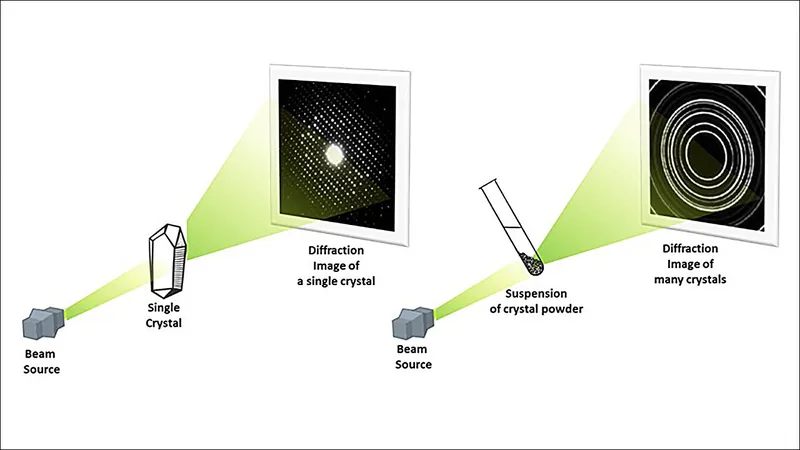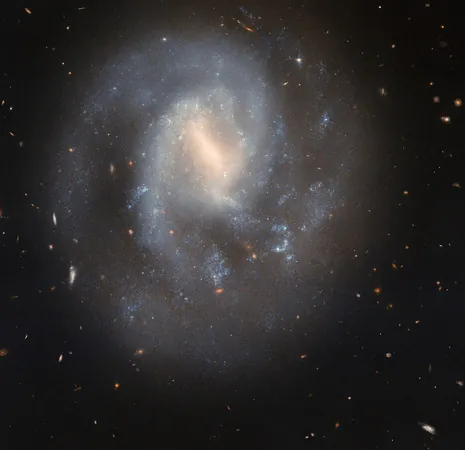
Revolutionizing Crystal Research: AI Uncovers the Secrets of Minuscule Crystals
2025-04-28
Author: Jacques
A Groundbreaking Discovery for Science and Technology
Imagine overcoming the long-standing challenges that have hindered the development of life-saving drugs, advanced batteries, and archaeological discoveries. For over a century, scientists have tackled this issue with crystallography, a technique pivotal for understanding material structures. Using X-ray beams, crystallographers can unveil the intricate patterns that reveal atomic arrangements within samples.
The Limitations of Traditional Techniques
However, crystallography has faced significant obstacles—specifically when it comes to tiny crystals known as nanocrystals. Traditional methods thrive on large, pure samples, but when limited to tiny particles, the data is often insufficient for accurate analysis. This limitation made it difficult to ascertain atomic structures from these minuscule grains.
AI Steps In: A Game-Changer for Material Science
Enter the researchers from Columbia Engineering, who have developed an innovative machine learning algorithm capable of decoding the diffraction patterns of nanocrystals. Published in Nature Materials, their study reveals how AI can reconstruct atomic structures with astonishing accuracy from incomplete data, marking a monumental leap in crystallography.
Simon Billinge, a leading professor at Columbia, expressed enthusiasm for the technology, likening the AI's learning process to that of language models like ChatGPT—analyzing vast datasets to uncover patterns, in this case, atomic arrangements.
Why Crystallography Matters
Crystallography is a cornerstone of scientific inquiry, instrumental in revolutionary discoveries such as the double-helix structure of DNA. Its applications span medicine, energy storage, and beyond. However, researchers often find themselves constrained by the limitations of available samples, particularly when only powdered or small quantities are obtainable.
The Magic of Machine Learning
To tackle the challenges of nanocrystals, the Columbia team utilized a generative AI model trained on a vast database of 40,000 atomic structures. By employing diffusion generative modeling, they managed to interpret weak diffraction signals and reconstruct accurate models of the crystals.
Hod Lipson, another key figure in the project, highlighted the resemblance to the famed protein folding problem, which also involves deducing complex structures from limited data. Their promising results indicate that AI technologies can provide unprecedented insights into long-standing scientific puzzles.
A Legacy and a Future of Possibilities
The significance of this research resonates deeply with Lipson, whose grandfather was an early pioneer in computational crystallography. As a field that has seen limited advancements for decades, today's breakthroughs signal an exciting future, not just for crystallography but for multiple disciplines grappling with similar scientific challenges.
As Gabe Guo, the project lead, noted, the evolution of AI from identifying simple objects to unraveling complex material structures underscores its immense potential. This research exemplifies how Artificial Intelligence is not only enhancing human capabilities but also driving innovation to uncharted territories.









 Brasil (PT)
Brasil (PT)
 Canada (EN)
Canada (EN)
 Chile (ES)
Chile (ES)
 Česko (CS)
Česko (CS)
 대한민국 (KO)
대한민국 (KO)
 España (ES)
España (ES)
 France (FR)
France (FR)
 Hong Kong (EN)
Hong Kong (EN)
 Italia (IT)
Italia (IT)
 日本 (JA)
日本 (JA)
 Magyarország (HU)
Magyarország (HU)
 Norge (NO)
Norge (NO)
 Polska (PL)
Polska (PL)
 Schweiz (DE)
Schweiz (DE)
 Singapore (EN)
Singapore (EN)
 Sverige (SV)
Sverige (SV)
 Suomi (FI)
Suomi (FI)
 Türkiye (TR)
Türkiye (TR)
 الإمارات العربية المتحدة (AR)
الإمارات العربية المتحدة (AR)